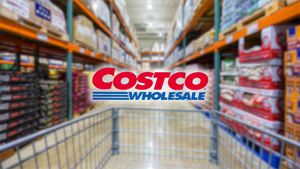DuPont Performance Building Solutions Research Engineer Michal (Elle) Porter shares her learnings from COP26 and what she believes this means for the building industry.
SOURCE: DuPont
DESCRIPTION:
I’ve tuned in to COP26 over the past week and a half and my main takeaway is this: we are out of time. Real and drastic action is needed, and it’s needed now.
According to Professor Johan Rockstrom, if we want to limit global warming to 1.5 degrees Celsius, we need a five to seven percent reduction in GHG emissions every single year, starting next year. To put that in perspective, in 2020, when much of the world was in lockdown, we saw only a 6.4 percent reduction in CO2 emissions...and it was only a temporary dip.
Immediate action is necessary to curb the worst impacts of climate change. So, what does that mean for the building industry?
1. We must build smart.
By 2050, we will need to replace existing fossil-fuel based energy capacity with renewable sourcing. Solomon Goldstein-Rose gave a breakdown of predicted clean energy generation requirements of the future. By 2050, it’s estimated we will need to have five times more electricity generation than what we generate today. Compared to the clean energy we produce today, it’s a twelve-fold increase!
We know building operations are a huge part of our global energy consumption and are responsible for 28 percent of annual GHG emissions. Everything, especially buildings, will need to be extremely efficient so that the renewable energy capacity we build can keep up with the energy demand of our planet’s growing population.
Building smart means building structures that are high-performing and energy-efficient. We must maximize energy efficiency in new and existing construction, decarbonize the energy used to operate buildings, and use low carbon materials in new construction.
Building smart also means building to higher standard energy efficiency codes. At DuPont we are advocating for changes that drive meaningful decision making in building design.
2. Our buildings must be durable and resilient.
Severe climate events are increasing all over the world. Even if we do limit global warming to 1.5 to 2 degrees Celsius, there will still likely be a temporary temperature overshoot. We must avoid tipping elements in our climate system that result in large risks for societies and ecosystems. Signs of instability are already being see in climate subsystems today. Our buildings need to withstand hurricanes and tropical storms, heatwaves and cold snaps, flooding and seismic events.
At DuPont, we recognize the importance of delivering solutions that help enable climate adaptation in the built environment. While many of our products today can be used to help the building envelope more resilient against climate events, we are continuing to look for opportunities where our building science knowledge and innovation capabilities can deliver new climate adaptation solutions.
3. We must have a hyper-focused innovation pipeline.
Years of work go in to innovating new products, so innovation portfolios need to focus on solutions that will make the most impactful contributions towards driving down emissions in the near term.
We are committed to working on innovations that will have a positive and meaningful impact to the planet in the next five to ten years and we’ve been feeding our innovation pipeline with these kinds of ideas. For example, over the last several years, we have had significant innovation programs aimed at delivering low embodied carbon products to our customers.
This year we’ve been able to see some of our efforts become a reality. We are driving the transition to reduced GWP products like Styrofoam and Froth-Pak– and seeing a significant impact. Our Froth-Pak™ Spray Foam reformulation utilizes carbon dioxide (CO2) in its spray foam blowing agent package which has a 99 percent lower global warming potential (GWP) compared to blowing agents used in past formulations. Together with the introduction of low GWP offerings within the Styrofoam™ Brand Insulation product line, these actions demonstrate significant steps taken to drive down emissions in the built environment. It’s exciting to see and it inspires us to do more.
It takes tremendous effort, passionate people, and bold leadership to do things differently and to incorporate sustainable thinking into business growth decisions. COP26 has made it clear that we must take the call to action and keep swimming together in the same lane.
KEYWORDS: DuPont, DuPont Performance Building Solutions, COP26, NYSE: DD





